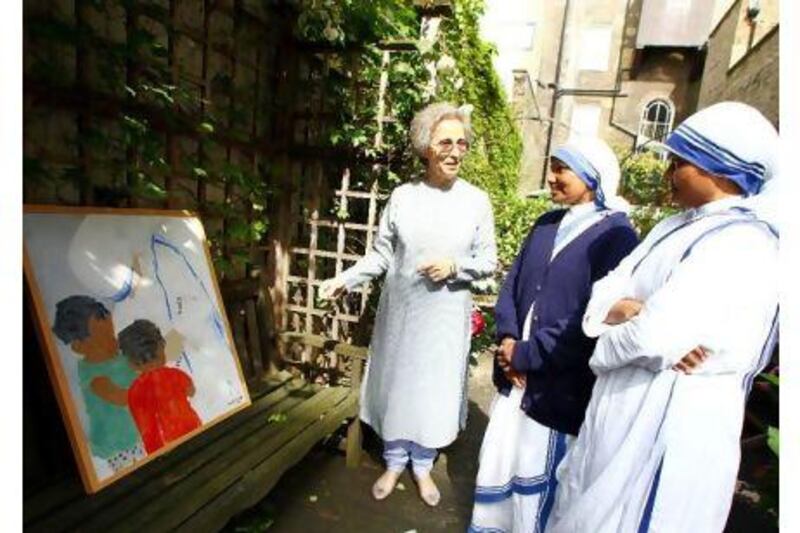NEW DELHI // India's Sunita Kumar, the brains behind the new line of saris by the French fashion house Hermes available from this month, became a designer because of a chance meeting with an unlikely dinner guest one night.
Mrs Kumar was at a dinner party in 1999 with the glitterati in New Delhi when she ran into Jean-Louis Dumas, the then head of Hermes.
"He looked at me and said 'what have you done to my scarf'." Mrs Kumar had cut up a Hermes scarf, which cost anywhere from Dh1,000 (13,400 rupees) to Dh3,000, and arranged it in a patchwork pattern on one of her chiffon saris. In response to the late Mr Hermes' outrage, Mrs Kumar retorted, "if you made saris, I wouldn't have to do this". From this chance encounter a decade-long partnership was born.
Mrs Kumar, 68, was contacted a year later by Jean-Louis' son and the company's creative director, Pierre-Alexis Dumas, to help design a series of saris.
Unlike the Hermes saris of a decade ago, the new collection launched this month in Mumbai is aimed at the rising population of wealthy Indians.
According to Mrs Kumar, Indians are more than prepared to pay the Dh22,000 price tag to own an Hermes sari.
"Before they thought, why spend three lakh (Dh27,000) on a sari when I can buy gold. Now the mindset has changed. If a sari is a rare commodity, like a Hermes piece, they will buy it."
The first Hermes saris debuted at the Hermes boutique in London in October 2000.
A sari is one of the world's simplest items of clothing. Made from a single piece of cloth four to nine metres in length, one would assume the makers of scarves could easily create a sari. Not so.
"They had no idea about how wide a sari should be, or how long," said Mrs Kumar. "They didn't know what a 'fall' was." The fall is a strip of heavier fabric attached to the edge of a sari, which helps it to hang properly.
"I was asked about draping, where it starts, where it goes over the shoulder, what are the pleats like - basically they asked, 'how do you wear a sari?'" That was not an easy question to answer.
There are hundreds of different ways. For example, in Maharashtra, the large western state that is home to Mumbai, the bottom half is folded between the legs and looks like a dhoti (Indian trousers), or the neighbouring Gujarati style where the drape is in the front. They settled on the most iconic sari style, with a drape thrown over the right shoulder.
There were only three or four saris available in each print, the most memorable for Mrs Kumar was the "alphabet sari".
"The font was done by Hermes and I played with their scarves and prints in different shapes and forms."
The first Hermes saris were an instant hit in the world of haute couture. The limited edition run of 120 sold out quickly and were bought by the likes of Jerry Hall, the former wife of Mick Jagger.
The 185cm-tall Ms Hall had to have 13cm added to the traditional sari width of 117cm before she could wear it.
Hermes launched a limited line just before Diwali, one of the holiest Hindu festivals, when new clothing is traditionally given as gifts and which also marks the start of the Indian wedding season.
For her part, Mrs Kumar is quite pleased with the latest line of her saris, which means she no longer has to cut up scarves to make her own.
"It led me to own an Hermes sari," she said.





